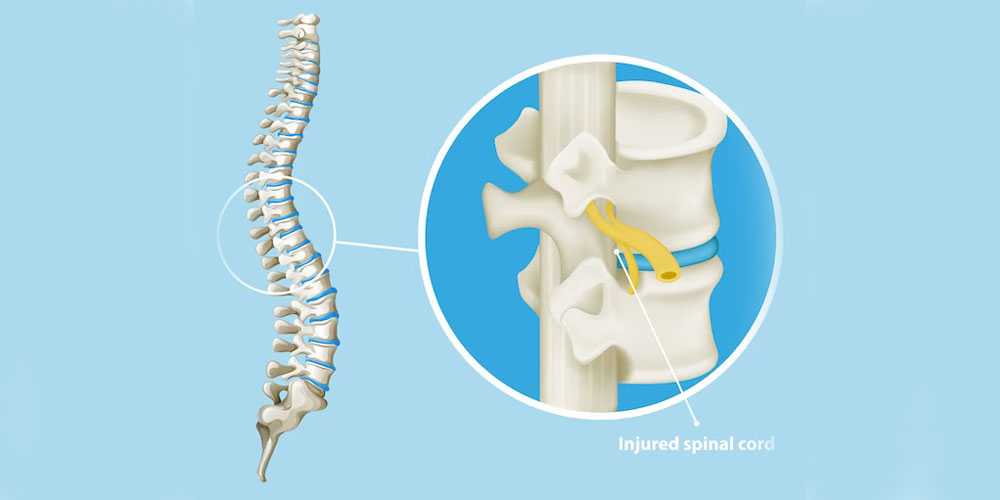Trauma to the cranium and spinal column together, known as craniospinal trauma, presents a severe challenge. These accidents, falls, sports accidents, and violent acts are only a few of the many possible causes of these injuries. Given the complex nature of such situations, understanding the specifics of how these injuries develop, evaluating them, and managing them is of utmost importance in modern medicine.

Numerous Craniospinal Trauma Mechanisms
Craniospinal trauma can result from a number of processes, each of which carries a unique set of risks and difficulties. Several common mechanisms include:
- Blunt Force Trauma: This situation arises when someone experiences a direct blow to the head or spine, such as during a car accident, a fall, or an assault. The force applied during such events can result in fractures of the skull, brain trauma, and harm to the spinal cord.
- Penetrating Trauma: Penetrating injuries, such as gunshot wounds or stab wounds to the head or spine, have the potential to inflict severe damage on both cranial and spinal structures.
- Whiplash Injury: Instances of abrupt deceleration or acceleration, as commonly seen in automobile accidents, can subject an individual's head and neck to forces capable of inflicting both cranial and spinal trauma simultaneously.
Assessment and Diagnosis
Diagnosing craniospinal trauma necessitates a multidisciplinary approach involving neurosurgeons, orthopedic surgeons, radiologists, and emergency medicine specialists. The evaluation typically encompasses:
- Clinical Examination: A comprehensive physical examination is imperative to gauge the patient's neurological condition, cranial injuries, and spinal stability. Any signs of altered consciousness, paralysis, or sensory deficits demand immediate attention.
- Imaging Studies: Computed tomography (CT) scans and magnetic resonance imaging (MRI) are pivotal tools in diagnosing craniospinal trauma. CT scans are instrumental in identifying skull fractures and brain injuries, while MRI exhibits superior sensitivity in detecting spinal cord injuries and soft tissue damage.
- Advanced Imaging: In select cases, advanced imaging modalities such as angiography or myelography may prove essential to assess vascular injuries or enhance visualization of the spinal cord.

Management of Craniospinal Trauma
The management of craniospinal trauma is multifaceted and predominantly contingent on the nature and severity of the injuries sustained. Typically, it involves a blend of surgical and non-surgical interventions.
- Stabilization: Immediate stabilization is paramount to avert further harm to cranial and spinal structures. This may necessitate the application of cervical collars, backboards, or traction devices.
- Surgical Intervention: In cases of severe cranial or spinal injuries, surgical procedures might be imperative. Neurosurgeons are equipped to address skull fractures, evacuate hematomas or foreign bodies, and alleviate intracranial pressure. Spinal surgeons, on the other hand, may perform procedures to decompress the spinal cord, stabilize fractures, or repair damaged spinal elements.
- Pharmacotherapy: Medications, including corticosteroids, are occasionally administered to mitigate spinal cord inflammation and swelling. Pain management and prophylactic antibiotics may also be included in the treatment regimen.
- Rehabilitation: Subsequent to the acute treatment phase, rehabilitation emerges as a vital component in the recuperation of craniospinal trauma patients. Physical therapy, occupational therapy, and speech therapy may be requisites to aid patients in regaining functionality and self-sufficiency.
The prognosis for craniospinal trauma patients spans a wide spectrum, contingent upon variables such as injury extent, the timeliness of medical intervention, and the patient's overall health. While some individuals may experience substantial recovery and regain a high degree of functionality, others may confront enduring challenges.
Craniospinal trauma represents a multifaceted challenge demanding comprehensive and swift medical attention and assistance from a well-versed practitioner and expert to achieve successful outcomes. Dr. Ravi Suman Reddy is an expert neurosurgeon equipped with an abundance of experience and skill sets. His profound comprehension of the mechanisms, assessment techniques, and management strategies associated with craniospinal trauma is indispensable to attaining optimal outcomes for affected individuals.

